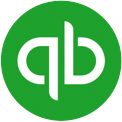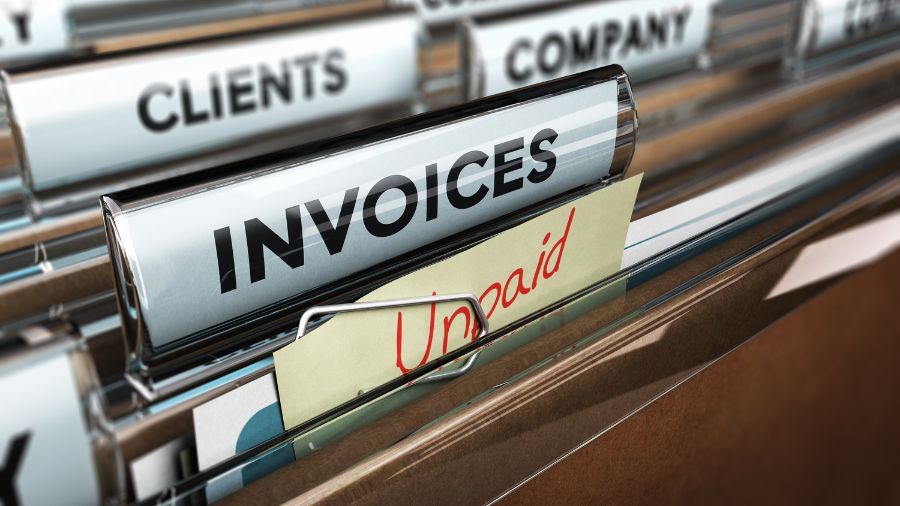It’s important to keep your accounts receivable to a minimum. But to get a handle on your accounts receivable, you must first determine how long it takes to collect on an account past due. Days sales outstanding is a metric that can help you understand how long it takes clients and customers to pay you.

What Is Days Sales Outstanding?
What is Days Sales Outstanding (DSO)?
A company’s days sales outstanding (DSO) is the average number of days it takes the business to collect payment over a period following a sale. A lower DSO means you’re collecting balances past due faster. Days sales outstanding is also sometimes referred to as “days sales in receivable.”
Why Is Days Sales Outstanding Important?
Days sales outstanding is important because it represents how efficiently a business collects payments, which can impact profitability. Analyzing DSO can help you pinpoint issues in your accounts receivable process and help forecast cash flow. Tracking DSO over time can help you identify trends that might inform your cash flow forecast.
If your business has a high DSO, consider evaluating your credit policies, including to whom you extend credit. If your DSO begins to climb, it may mean more of your cash is tied up in accounts receivable. A high DSO may indicate an approaching cash crunch.
But DSO is just one piece of the puzzle when it comes to analyzing business performance. Business owners should assess days sales outstanding alongside other KPIs and financial ratios to get a full understanding of business health.
Other metrics businesses can use to assess the effectiveness of their collections include the cash conversion cycle and accounts receivable turnover ratio.
Components of the DSO Formula
The days-sales-outstanding formula divides accounts receivable by total credit sales, multiplied by a number of days in a measurement period.
Your accounts receivable (A/R) is all outstanding payments owed to your company, and can be found by reviewing your balance sheet and income statement. Credit sales are sales to be settled on a future date.
For example, let’s say you have $20,000 in accounts receivable and sold $10,000 on credit in a 30-day period. Using the DSO formula, you find it takes an average of 60 days to collect your invoices. Most business owners compare figures quarterly or annually, not over prior time periods.
DSO only applies to businesses that issue credit sales. Cash sales have a DSO of zero, and you shouldn’t factor them into DSO calculations, as they will skew the metric.
How to Calculate Days Sales Outstanding
The formula for days sales outstanding is:
(Accounts receivable ÷ total credit sales) x number of days = standard DSO
In addition to calculating the standard DSO on your accounts past due, you can calculate your best possible DSO. Your best possible DSO divides a current portion of your accounts receivable by total credit sales, multiplied by a number of days. The formula follows:
(Current accounts receivable ÷ total credit sales) x number of days = best possible DSO
Days sales outstanding calculation example
Here’s how to use the days sales outstanding formula:
Let’s use an example of a business that has $10,000 in accounts receivable on January 1, 2020. The next month, on February 1, 2020, the business has $12,000 in accounts receivable. The business also sells $8,000 in credit sales between January 1 and February 1.
Use these steps to calculate DSO:
1. Calculate average account receivable
First, we’ll find the average accounts receivable over the time period being analyzed:
($10,000 + $12,000) ÷ 2 = $11,000 average accounts receivable
2. Find total credit sales
In this case, we know that total credit sales over the time period being analyzed is $8,000.
3. Find the total number of days in the time period
January has 31 days, so 31 will be the number of days we use in the DSO formula.
4. Apply these numbers to the DSO formula
Using the DSO formula, we can calculate days sales outstanding with the numbers we’ve found. Given the DSO formula:
(Accounts receivable ÷ total credit sales) x number of days = standard DSO
($11,000 ÷ $8,000) x 31 = 42 days sales outstanding
How Do Days Sales Outstanding Affect Business Finances?
When the cash your clients owe your business sits in their bank accounts, it negatively affects your finances in a few ways. The most apparent is the loss of revenue.
When overdue accounts go past 120 days, the lesser your chances of collecting. If that happens, you stand to lose that amount on your pretax income. You may also lose out on an opportunity to expand or otherwise enhance your business because you won’t have the cash to invest.
Lost revenue may also result in cash flow problems that may lead you to seek outside financing. If you can’t pay your monthly operational costs, your interest payments may increase your cash burden. And if you send the account to a collection agency, they may collect a percentage of the balance.
What is a Good DSO Ratio?
Generally, a low DSO ratio is better for your business. But your ideal days-sales-outstanding ratio depends on your industry and type of business. In 2018, the average DSO number was 40 days among non-financial companies analyzed by the Hackett Group.
To understand the effectiveness of your accounts receivables process, analyze individual DSO values, and review trends in DSOs over time. DSOs may also vary according to seasonality. Generally, seasonal rises and falls aren’t a cause for concern. Instead, forecast your business’s cash flow to plan for seasonal changes.
Why would days sales in receivables increase?
An increase in days sales outstanding indicates that it may be taking your business longer to collect outstanding payments.
Reasons why you may see a higher DSO include:
- Customers are taking longer to make payments.
- Customers aren’t satisfied with your business or customer service, so they may be reluctant to pay.
- Customers with poor credit are making purchases on credit. So you may need to review your credit terms.
- Your sales team is extending flexible payment terms to help drive sales.
How to Reduce and Improve DSO
Now that you understand how collecting accounts receivable can affect your business’s health, it’s time to put a plan in action. Here are eight ways to encourage your customers to pay their invoices and improve your DSO:
1. Invoice customers as soon as you deliver a product or service.
When it comes time to collect payments from customers, don’t delay on getting invoices sent out. You may not always be able to control how quickly customers pay you once they have your invoice in hand. But sending out invoices as quickly as possible once you’ve delivered a product or service is one action you can take to improve the speed of payments.
2. Use an invoice template that includes your payment terms, due dates, and options.
Including information on your invoices like due days, payment terms and options can help keep you and your customers on the same page. Use an invoice template that includes all of these important details, like the invoices generated by QuickBooks’ free invoice generator, or free invoice templates.
3. Automate your accounting system so that you can get alerts when invoices are overdue.
Automating the accounts receivable process is simple when you use accounting software that integrates with your payment system and business bank account.
QuickBooks Online makes it easy to track the status of your invoices, from when they’re sent, viewed by your customers, paid, and deposited into your business bank account. Invoices are sorted by status, with overdue invoices listed first, making it easy to see who owes you.
4. Request payment as soon as you notice outstanding accounts.
When you discover past-due accounts, take action to remind clients of their overdue payments. Reaching out about past due payments can be challenging and even a little uncomfortable, particularly if your ability to pay your business’s bills depends on incoming cash flow from clients.
Using an invoice email reminder template can help you decide what to say when you reach out. Picking up the phone and giving your customers a call can also speed up the collections process.
5. Review your books and adjust payment terms for clients who pay late consistently.
Decide your payment terms carefully. There are many terms you can offer to clients, and if you find certain customers are consistently behind on payments, it may help to shorten your payment terms. You can also consider requiring full or partial payments in advance.
6. Tighten your credit requirements for new applicants.
Similarly to decisions about payment terms, you can also make decisions about the credit requirements of your clients. It’s often easier to decide to adjust payment terms based on a client’s credit history before completing any work than it is to deal with collecting from a late-paying client after you’ve delivered the work. A client’s credit history may give you insight on how to adjust your payment terms and credit policies when working with them.
7. Ask for upfront deposits and milestone payments rather than waiting to collect the full balance at the end of the job.
Another way to improve your cash flow is to require a deposit before starting work, or to agree payment terms that require progress payments. Both upfront deposits and progress payments, which are delivered based on the completion of a specific part of the work you’re doing for a client, can help you get paid faster for your work.
8. Offer clients more payment options, including electronic payments.
Many clients may be accustomed to making payments using a certain method, which can create friction when it’s time for them to pay their bills. Offering a wide range of payment options can help eliminate this common barrier to getting paid on time.



